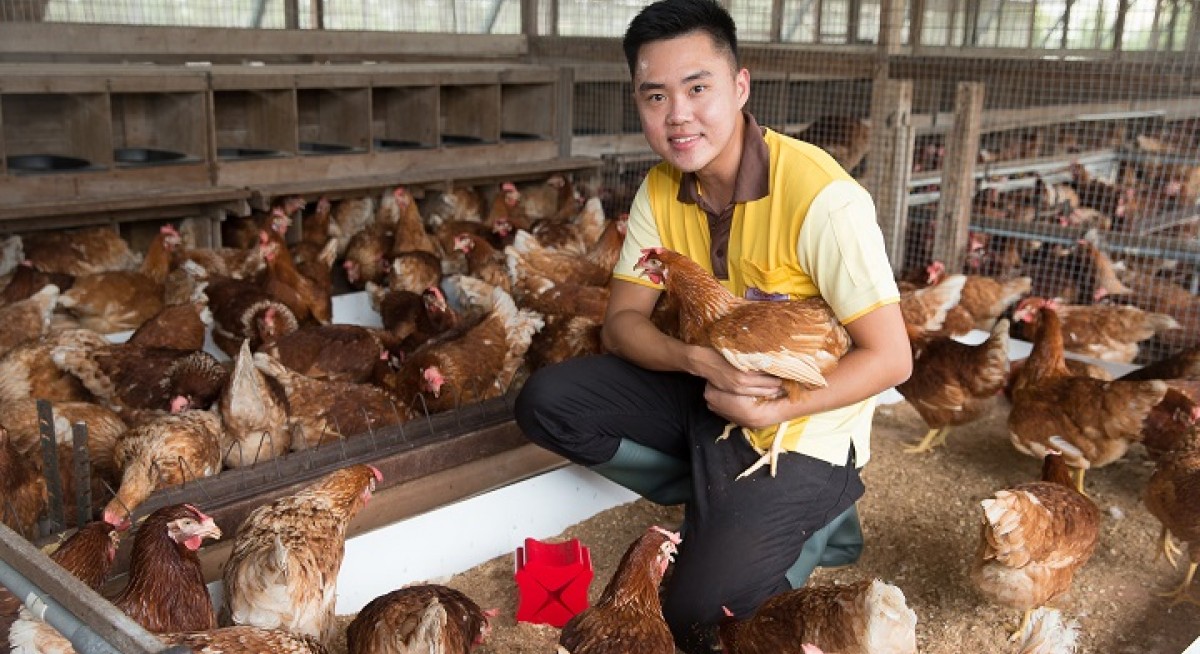On May 29, DBS Bank announced that it was giving Chew’s a 10-year, $27 million sustainability-linked loan. The funds will go towards building the new farm with its larger cage-free facilities. According to DBS, the loan was evaluated based on a series of environmental, social and governance (ESG) performance metrics. Under the loan terms, Chew’s will enjoy lower interest rates if it continues to meet HFAC’s standards. These include an appropriate environmental design for the farm, and caring and responsible planning and management of livestock, all of which will presumably result in more nutritious eggs.
DBS has, over the past year and a half, disbursed some $688 million in sustainability-linked loans. Last October, it gave CapitaLand a five-year $300 million multicurrency loan on the basis of the real estate developer’s listing on the Dow Jones Sustainability World Index. The terms of the credit facility include a tiered, reduced interest rate contingent on CapitaLand’s ESG performance as assessed by RobecoSAM. Importantly, the company has the flexibility to use the funds for general corporate purposes, and not necessarily for sustainability projects such as the “greening” of a building, which would be the terms of typical “green” loans.
Indeed, such “open” credit facilities are catching on. According to data by Bloomberg, sustainability-linked loans surged more than seven times last year from the year before, to top US$36.4 billion ($50.2 billion). By contrast, green bonds, or loans specifically to fund environmentally friendly projects, grew only 5% last year to US$182.1 billion, though they still made up 74% of the sustainable debt market.
This means banks, which not too long ago were symbols of excess and the very illustration of unsustainable practices, are now shaping up to be the vanguard of sustainability. With such loans, they are incentivising a change in behaviour and by extension setting various industries on the path to sustainability.
To be sure, as we report this week, the financial institutions may only be doing so as a result of investor pressure: Money managers, who themselves are under pressure from a new generation of investors, are demanding that the lenders review their loan books and weed out “unsustainable” customers such as oil and gas companies. Likewise, companies that take on ESG loans are likely to also be trying to appease their stakeholders.
It is, nevertheless, a welcome change. There are some issues that bear consideration, however. For one, that the new breed of sustainability-linked loans are not tied to a specific “green” or humanitarian project suggests they have far less stringent terms than their “green” predecessors. The terms for some of these loans are also opaque: It is not clear just how much lower the interest rates would be, for instance.
Yet another issue is the still-lacklustre demand for sustainably produced products. Despite the public’s shock over the life of battery hens, Chew’s has said that it is only able to sell half of its cage-free eggs. At $3.20 for a half-dozen, they are about 60% more expensive than a tray of 10 vitamin-enriched eggs from the other hens on the farm. The palm oil industry is facing the same problem: In spite of the furore over the way palm oil is produced and efforts by industry players to turn sustainable, producers are still having trouble selling their certified “green” palm oil.
As such, there is no real way to quantify the impact of such loans, even as the borrowers adhere to certain standards or targets tied to the facility. If Chew’s builds more open compounds to produce more cage-free eggs, but nobody buys them, what is the positive effect? It also bears noting that Chew’s is not converting its entire operations into becoming cage-free.
Given how hot the concept of ESG is in asset management today, the pot of money for sustainability-linked loans is going to grow. But if standards and transparency are lacking, there is a risk of substantial resources being squandered. And if investors do not see tangible returns on their money, the ESG-linked loan industry would die out, just as the ethical investing trend did in the 1990s — only this time, far more is at stake.
This story appears in The Edge Singapore (Issue 884, week of June 3) which is on sale now. Subscribe here




